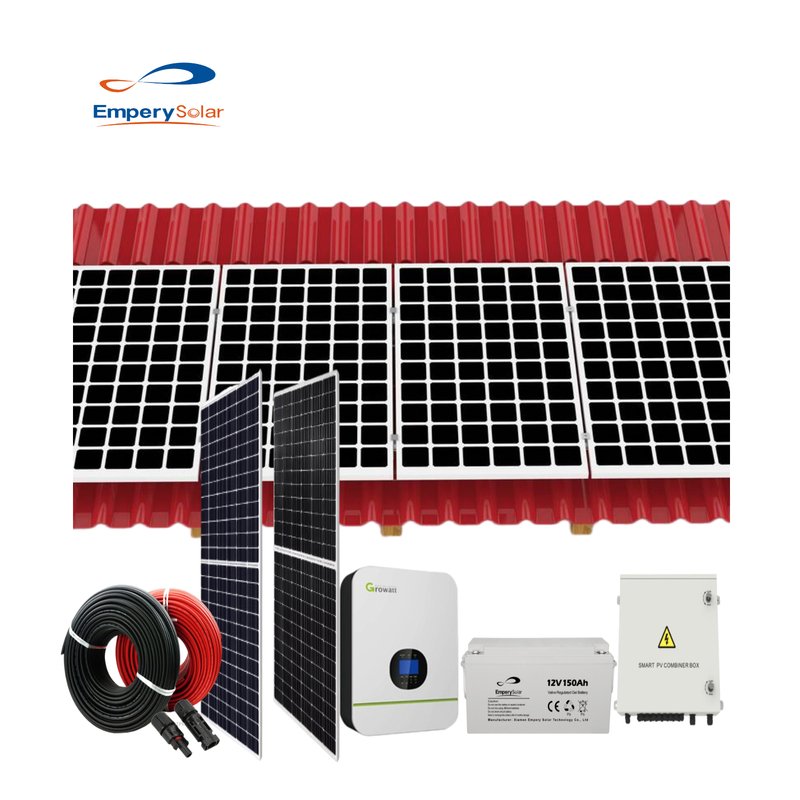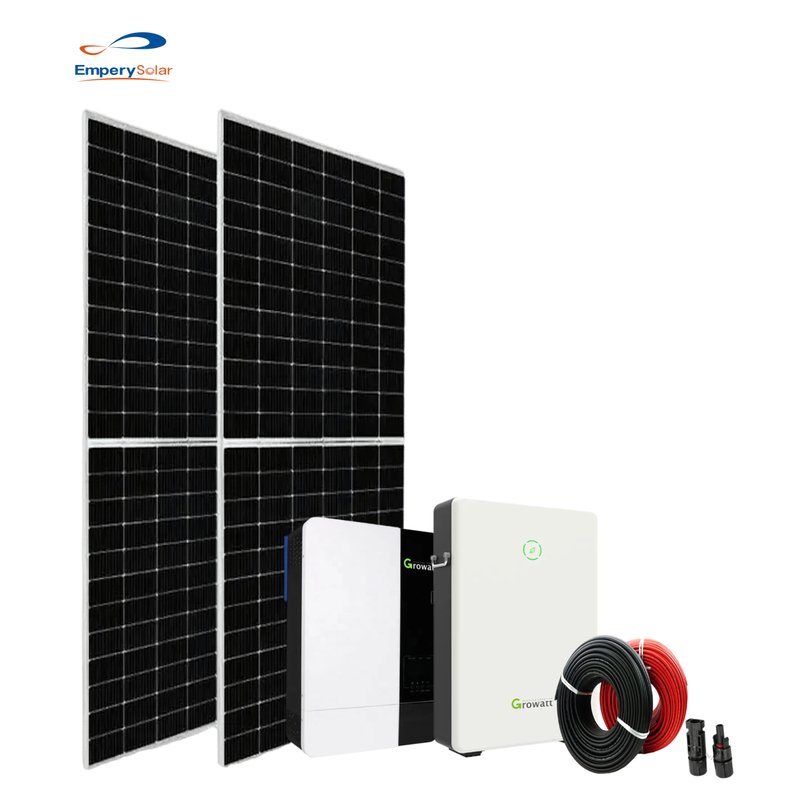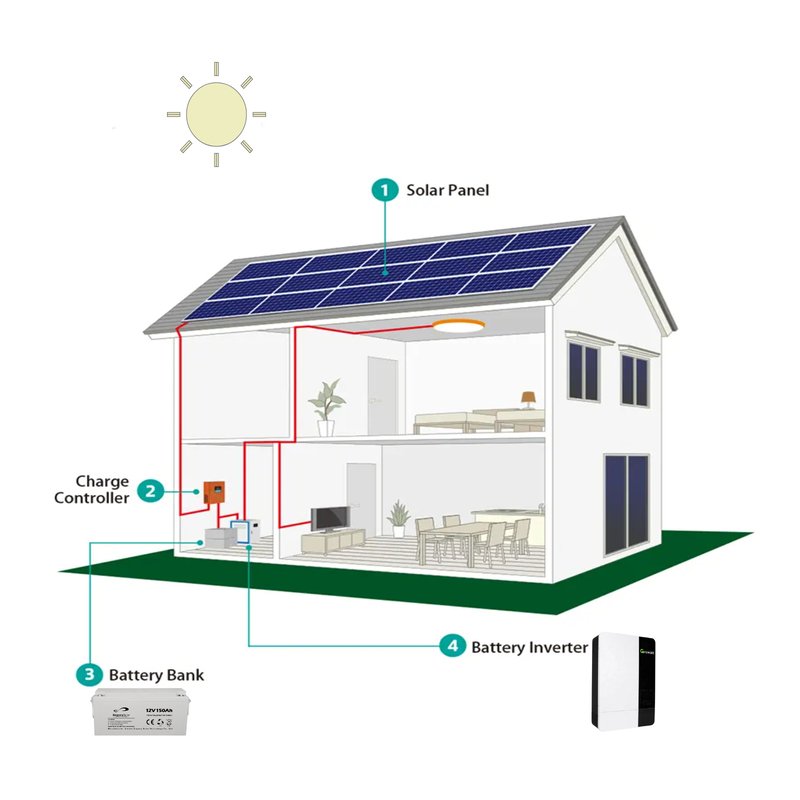As the demand for sustainable and independent energy sources grows, Off-Grid Solar Systems have become increasingly popular. These systems offer an effective solution for those seeking energy independence and a reduction in their carbon footprint. This guide will provide an in-depth look at the basics of Off-Grid Solar System, including their components, benefits, and considerations for installation. Building your own Off-Grid Solar System can seem daunting, but with the right approach, it becomes a manageable project. This guide will walk you through each step of the process, from planning and design to installation and maintenance. Whether you’re looking to power a small cabin or an entire home, understanding how to set up an Off-Grid Solar System will help you achieve energy independence.
What is an Off-Grid Solar System?
An Off-Grid Solar System is a stand-alone power system that operates independently from the traditional electrical grid. Unlike grid-tied systems, which rely on the local utility for power when solar energy is insufficient, Off-Grid Solar Systems generate, store, and supply all the electricity needed for a home or facility. This makes them ideal for remote locations or situations where access to the grid is unavailable or unreliable.

Key Components of Off-Grid Solar Systems
Off-Grid Solar Systems consist of several critical components that work together to provide continuous power:
- Solar Panels: The primary source of energy, solar panels convert sunlight into direct current (DC) electricity. The efficiency and number of panels determine how much energy the system can generate.
- Battery Bank: The battery bank stores excess electricity generated during sunny periods. It supplies power when the panels are not producing enough energy, such as at night or during cloudy days.
- Charge Controller: This device regulates the flow of electricity from the solar panels to the battery bank. It ensures that the batteries are not overcharged or discharged too much, extending their lifespan.
- Inverter: The inverter converts the DC electricity stored in the batteries into alternating current (AC), which is used by most household appliances.
- Backup Generator: In some cases, a backup generator is included to provide additional power during prolonged periods of low sunlight.

Benefits of Off-Grid Solar Systems
Off-Grid Solar Systems offer several advantages, making them an attractive option for many:
- Energy Independence: By generating your own power, you are not reliant on the grid, protecting yourself from outages and rising energy costs.
- Environmental Impact: Off-Grid Solar System reduces reliance on fossil fuels, decreasing greenhouse gas emissions and contributing to a cleaner environment.
- Cost Savings: Although the initial investment may be higher, Off-Grid Solar System can save money in the long run by eliminating monthly electricity bills.
- Remote Accessibility: Off-Grid Solar Systems are perfect for remote or rural areas where connecting to the grid is impractical or expensive.
Considerations for Installing an Off-Grid Solar System

Before installing an Off-Grid Solar System, several factors need to be considered to ensure the system meets your needs:
- Energy Consumption: Calculate your daily energy usage to determine the size of the system required. Consider factors such as the number of occupants, the types of appliances, and energy-saving measures.
- System Sizing: Proper sizing of the solar panels and battery bank is crucial. An undersized system may not meet your energy needs, while an oversized system can be unnecessarily expensive.
- Location: The effectiveness of an Off-Grid Solar System depends on the amount of sunlight available. Locations with high solar irradiance are ideal, but systems can be designed to work efficiently in less sunny areas.
- Maintenance: Regular maintenance of the system, especially the batteries, is essential for optimal performance. This includes cleaning the panels, checking connections, and monitoring the battery health.
- Permitting and Regulations: Check local regulations and permitting requirements before installation. Some areas may have restrictions or incentives that affect your system design and cost.
The Future of Off-Grid Solar Systems
The future of Off-Grid Solar Systems looks promising as technology continues to advance. Improvements in battery storage, solar panel efficiency, and system integration are making Off-Grid Solar System more accessible and affordable. Additionally, the growing interest in renewable energy and sustainability is driving innovation in the industry.
As more people seek ways to reduce their environmental impact and achieve energy independence, Off-Grid Solar System will play a crucial role in the transition to a cleaner, more sustainable energy future.
Conclusion
Off-Grid Solar Systems provide a reliable and sustainable energy solution for those looking to disconnect from the traditional grid. By understanding the basics of these systems, including their components, benefits, and installation considerations, you can make an informed decision about whether an Off-Grid Solar System is right for you. With the right planning and maintenance, these systems can offer long-term energy independence and environmental benefits. Building your own Off-Grid Solar System involves careful planning and execution. By following these steps, you can create a reliable and efficient solar power system. This setup will provide you with energy independence and contribute to a more sustainable lifestyle. With proper design, installation, and maintenance, your Off-Grid Solar System will offer long-term benefits and reliable power for your needs.
